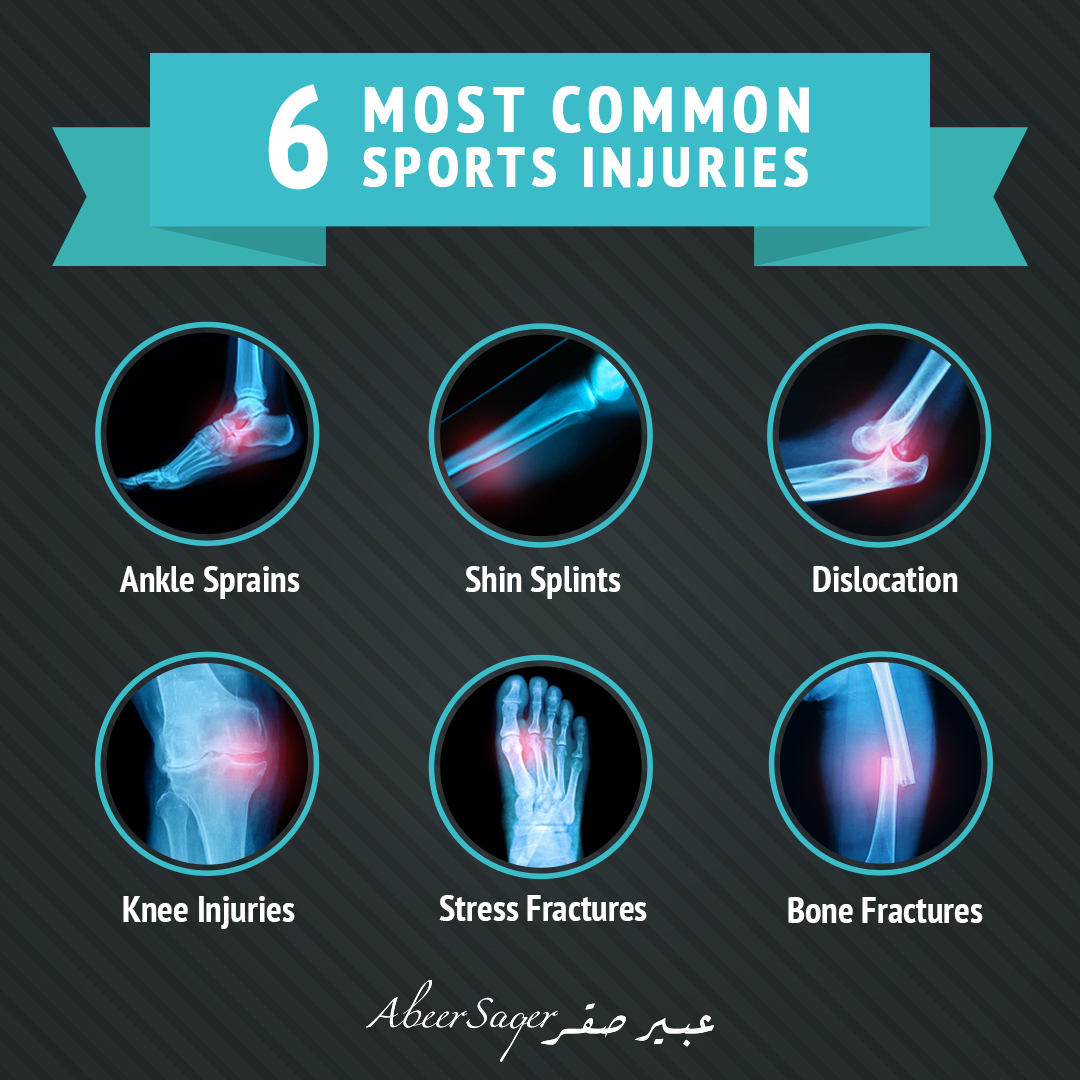Preventing and Managing Common Sports Injuries
Sports are a fantastic way to stay active, socialize, and push our physical boundaries. Whether you’re a seasoned athlete or someone who enjoys recreational sports, injuries are an unfortunate risk. However, with the right knowledge and precautions, many common sports injuries can be prevented or effectively managed. In this article, we will explore essential tips and techniques to keep you safe and healthy while engaging in your favorite physical activities.
Table of Contents
- Introduction
- Understanding Common Sports Injuries
- Types of Sports Injuries
- Most Affected Areas
- Preventing Sports Injuries
- Warm-Up and Cool-Down Routines
- Proper Training Techniques
- Using Protective Gear
- Listening to Your Body
- Balancing Rest and Activity
- Maintaining a Healthy Diet
- Common Sports Injuries and How to Manage Them
- Sprains and Strains
- Fractures and Dislocations
- Concussions
- Overuse Injuries
- Tendinitis
- First Aid for Sports Injuries
- R.I.C.E Method
- When to Seek Professional Help
- Rehabilitation and Recovery
- Physical Therapy
- Gradual Return to Sports
- Psychological Support
- Tips for a Safe Return to Sports
- Proper Conditioning
- Cross-Training
- Modifications and Limitations
- The Importance of Rest and Sleep
- Staying Injury-Free in the Long Run
- Understanding Your Limits
- Regular Health Check-ups
- Professional Coaching and Guidance
- Conclusion
- FAQs
- What are the best ways to prevent sports injuries?
- How do I know if I have a serious sports injury?
- Can I treat a sports injury at home?
- When is it safe to return to sports after an injury?
- Is it normal to feel anxious about returning to sports after an injury?
Introduction
Participating in sports offers numerous benefits, including improved cardiovascular health, enhanced muscle strength, and increased self-confidence. However, injuries can happen unexpectedly, hindering our ability to enjoy sports fully. By following proper safety measures and adopting preventive strategies, you can minimize the risk of injuries and make the most out of your athletic journey.
Understanding Common Sports Injuries
Before delving into prevention and management techniques, it’s crucial to understand the types of injuries athletes commonly face and the areas of the body most susceptible to damage.
Types of Sports Injuries
Sports injuries can be broadly categorized as acute or overuse injuries. Acute injuries occur suddenly, often due to a traumatic event like a fall or collision, leading to sprains, strains, fractures, and dislocations. On the other hand, overuse injuries develop over time from repetitive motions, causing conditions like tendinitis or stress fractures.

Most Affected Areas
While sports injuries can occur anywhere in the body, some areas are more prone to damage. These include the knees, ankles, shoulders, elbows, and spine.
Preventing Sports Injuries
Prevention is key to ensuring a safe and enjoyable sports experience. Here are some essential preventive measures to follow:
Warm-Up and Cool-Down Routines
Always start with a dynamic warm-up to increase blood flow and prepare your muscles and joints for activity. Likewise, end each session with a cool-down to gradually reduce your heart rate and prevent muscle stiffness.
Proper Training Techniques
Proper form and technique are essential to avoid undue strain on your body. Whether you’re lifting weights or running, seek guidance from a qualified coach or trainer to ensure you’re using the correct technique.
Using Protective Gear
When engaging in contact sports or activities with a risk of falls, wearing appropriate protective gear like helmets, pads, and mouthguards can significantly reduce the risk of serious injuries.
Listening to Your Body
Pay attention to any signs of discomfort or pain during sports activities. Pushing through pain can worsen injuries, so it’s vital to rest and seek medical attention if needed.
Balancing Rest and Activity
Overtraining can lead to overuse injuries and burnout. Allow your body ample time to recover between intense workouts and competitions.
Maintaining a Healthy Diet
A well-balanced diet rich in nutrients can contribute to strong bones, muscles, and overall physical well-being, reducing the risk of injuries.
read more about Navigating the World of Over-the-Counter Pain Relievers
Common Sports Injuries and How to Manage Them
Despite taking precautions, injuries may still occur. Knowing how to manage them properly can promote a speedy recovery:

Sprains and Strains
Rest, ice, compression, and elevation (R.I.C.E) are crucial for treating sprains and strains in the early stages. Gradual rehabilitation exercises can help restore strength and flexibility.
Fractures and Dislocations
Seek immediate medical attention for fractures and dislocations. Immobilization and physical therapy may be necessary for proper healing and rehabilitation.
Concussions
Concussions require rest and monitoring. Athletes should only return to sports after receiving clearance from a healthcare professional.
Overuse Injuries
Overuse injuries often heal with rest, but modifying training and activity levels can prevent reoccurrence.
Tendinitis
Tendinitis can be managed with rest, ice, and anti-inflammatory medications. Physical therapy can help strengthen the affected tendon.
First Aid for Sports Injuries
Knowing how to provide initial care for sports injuries can make a significant difference in recovery:
R.I.C.E Method
The R.I.C.E method mentioned earlier is a standard first aid technique for managing acute injuries until medical help can be obtained.
When to Seek Professional Help
If the injury is severe, persists, or worsens despite home care, it’s essential to consult a medical professional promptly.
Rehabilitation and Recovery
Rehabilitation plays a crucial role in helping athletes return to their sport safely:
Physical Therapy
Physical therapy is beneficial for restoring function and range of motion after an injury. It helps athletes regain strength and flexibility while minimizing the risk of reinjury.
Gradual Return to Sports
Returning to sports should be a gradual process, allowing the body to adapt and heal fully.
Psychological Support
Injuries can take a toll on an athlete’s mental well-being. Seeking support from peers, coaches, or professionals can aid in the recovery process.
Tips for a Safe Return to Sports
As you prepare to get back into the game, consider the following tips:
Proper Conditioning
Conditioning your body for the specific demands of your sport can reduce the risk of injuries.
Cross-Training
Engaging in different activities can enhance overall fitness and reduce the risk of overuse injuries.
Modifications and Limitations
Follow any modifications or limitations recommended by your healthcare provider or physical therapist.
The Importance of Rest and Sleep
Adequate rest and quality sleep are essential for the body’s recovery and overall well-being.
Staying Injury-Free in the Long Run
To enjoy sports for years to come, keep these tips in mind:
Understanding Your Limits
Recognize your physical limitations and avoid pushing yourself beyond what your body can handle.
Regular Health Check-ups
Regular check-ups with healthcare professionals can help identify and address potential issues before they become severe.
Professional Coaching and Guidance
Having a knowledgeable coach or trainer can significantly reduce the risk of injuries and help improve athletic performance.
Conclusion
Sports injuries are an inevitable part of physical activity, but with the right approach, they can be minimized and managed effectively. By prioritizing prevention, listening to your body, seeking proper medical attention when needed, and adopting safe return-to-sport practices, you can enjoy the benefits of sports while reducing the risk of injuries.
FAQs
- What are the best ways to prevent sports injuries?
- Following warm-up and cool-down routines, using protective gear, and maintaining proper training techniques are effective preventive measures.
- How do I know if I have a serious sports injury?
- Severe pain, swelling, loss of range of motion, or inability to bear weight on the injured area are signs of a potentially serious injury.
- Can I treat a sports injury at home?
- Minor injuries can be treated with the R.I.C.E method, but if symptoms persist or worsen, professional medical help should be sought.
- When is it safe to return to sports after an injury?
- The timing of the return depends on the severity of the injury and should be guided by a healthcare professional.
- Is it normal to feel anxious about returning to sports after an injury?
- Yes, it’s entirely normal to feel anxious. Seeking support from peers and professionals can help ease the transition back to sports.







 Viesearch - The Human-curated Search Engine
Viesearch - The Human-curated Search Engine
